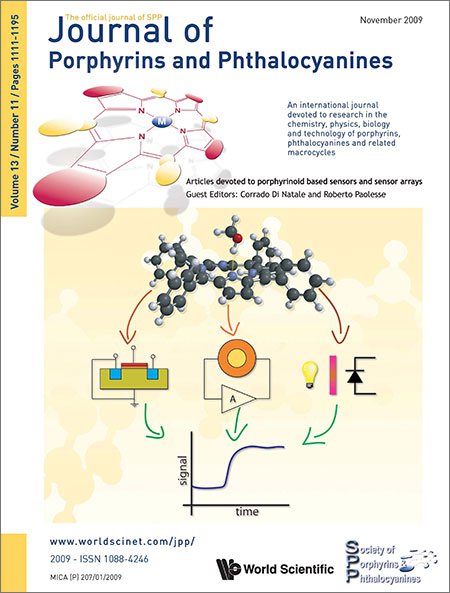New insights into sensors based on radical bisphthalocyanines
Abstract
The unique semiconducting, optical and electrochemical properties of radical lanthanide bisphthalocyanines make them ideal materials for sensing applications. A variety of chemical sensors have been developed using rare-earth bisphthalocyanine thin films. In this paper, the characteristics of sensors based on bisphthalocyanines are reviewed. The advantages of these sensors with respect to sensors developed using other metallophthalocyanines are discussed. Resistive sensors based on bisphthalocyanines change their conductivity when exposed to a variety of pollutant gases and volatile organic compounds. Because bisphthalocyanines are intrinsic semiconductors, the conductivity of their thin films is higher than the conductivity of metallophthalocyanine thin films. This facilitates the electrical measurements and enhances the sensitivity of the sensors. Optical sensors have also been developed based on the rich optical properties shown by bisphthalocyanines. Films characterized by a bright green color change to red or to blue upon oxidation or reduction. The changes also affect the charge-transfer band associated to the free radical that bisphthalocyanines show in the near infrared region. This band coincides with telecommunication wavelengths, making possible the fabrication of fiber optic sensors where a phthalocyanine film is deposited at one of the ends of the fiber. Electrochemical sensors have been developed taking advantage of the unique electrochemical behavior associated to the one-electron oxidation and one-electron reduction of the phthalocyanine ring. These reversible processes are extremely sensitive to the nature of the electrolytic solution. This has made possible the development of voltammetric sensors able to produce particular signals when immersed in different liquids. In the last part of the paper, the fundamentals and performance characteristics of electronic noses and electronic tongues based on bisphthalocyanines are described. Such devices have been successfully exploited in quality control, classification, freshness evaluation and authenticity assessment of a variety of food, mainly wines and olive oils.

Handbook of Porphyrin Science now available in 46 volumes


